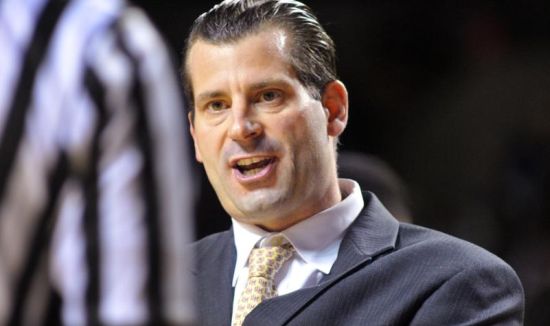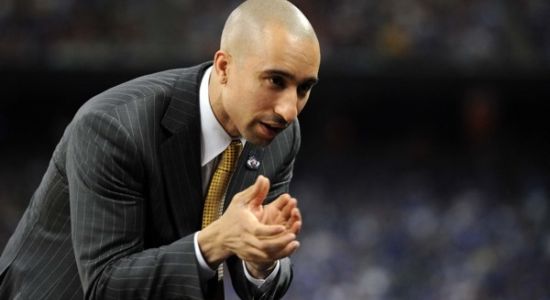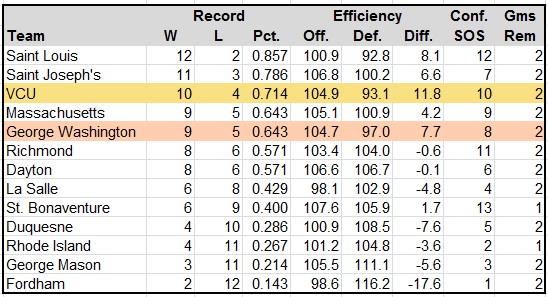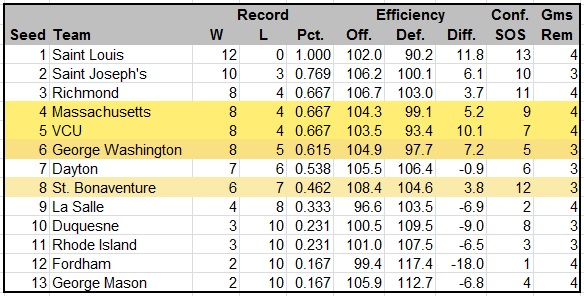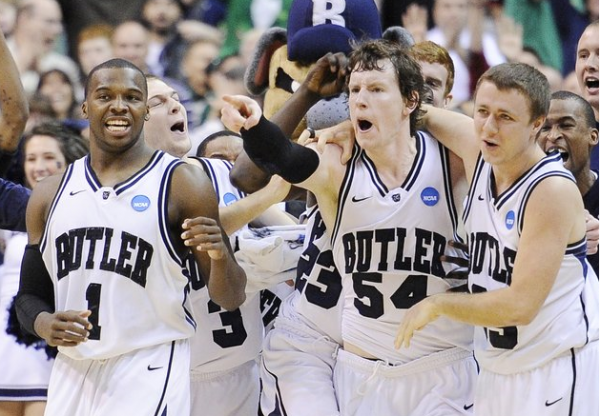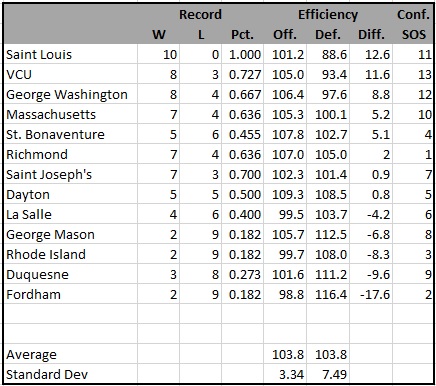Atlantic 10 Early Season Tournaments: Report Card
Posted by Joe Dzuback (@vtbnblog) on December 1st, 2014Joe Dzuback is the RTC correspondent for the Atlantic 10 Conference. You can also find his musings online at Villanova by the Numbers or on Twitter @vtbnblog.
Let’s take a look at last week’s Feast Week action for Atlantic 10 teams and grade their performance appropriately.
- Dayton, Massachusetts, Virginia Commonwealth: B — The Flyers, Minutemen and Rams won most of their tournament games, several against BCS teams. Dayton beat Boston College 65-53 to take third place in the Puerto Rico Tip-Off, after edging Texas A&M 55-53 in the first round and losing to Connecticut 75-64 in the second round. 2-1 versus BCS teams made this a good outing. Massachusetts compiled a 3-1 record versus the field in the Hall of Fame Tip-Off, played at the Mohegan Sun casino in Uncasville, Connecticut. The Minutemen cleaned up in the preliminary rounds, handling Manhattan (77-68) and Northeastern (79-54) easily. Coach Derek Kellogg’s squad lost the opening round of the bracketed event to Notre Dame 81-68, but bounced back to beat Florida State 75-69 in the consolation round. UMass’ start this season has not been as strong as 2013-14, the new back court will need time to gel. Virginia Commonwealth University closed out the Legends Classic with a 77-63 win over Oregon in the consolation game to run their invitational record 3-1. The Rams overcame early shooting woes to down Toledo 77-68 and then demolished Maryland-Eastern Shore 106-66 before heading into the Barclays Center for a showdown with #12 Villanova in the opening game of the Championship bracket. Trailing by only two (32-30) going into half-time, the Rams had a nice 6-0 to open the second half before they lost control of the game and fell 77-53. Despite the margin Coach Shaka Smart’s team bounced back the next night against Ducks in a game they controlled from opening tip and went on to win 77-63.
- La Salle, Rhode Island and Saint Louis: C — La Salle swept their preliminary round games with St. Peter’s (59-50) and St. Francis of New York (73-60), but lost both “host” bracket games at the Barclays Center (of all places). Virginia put up eight points before La Salle scored a field goal. The Cavaliers put together a 10-6 run over the next five minutes to expand their margin to 10 points. Over the last 8:25 of the first half the Cavaliers put together a 19-11 run to expand their edge to 18. While La Salle managed trim the eventual losing margin to eight, they were never in the game. They lost the second game to Vanderbilt by 13, 68-55 to level their record Barclays Center Classic record to 2-2. Coach Dan Hurley’s squad traveled to Orlando to participate in the three-game Orlando Classic. Opening against #11 Kansas, the Rams registered a 76-60 loss. They went on to beat Santa Clara 66-44, which set up their third round game versus Georgia Tech. The Rams lost to the Yellow Jackets, 64-61 to close out with a 1-2 record. The Billikens hosted Texas A&M–Corpus Christi and lost by six, 62-56. They squeaked by North Carolina A&T 58-55 before traveling to Texas for their “host” bracket games in the Corpus Christi Coastal Classic. Drubbed by Mississippi State 75-50 in the first round, Coach Jim Crews’ squad bounced back versus Bradley 60-57 to finish 2-2. Rhody and SLU are young squads, the games, while disappointing immediately, will pay dividends later. Read the rest of this entry »





























